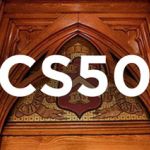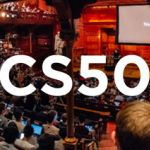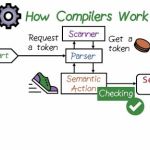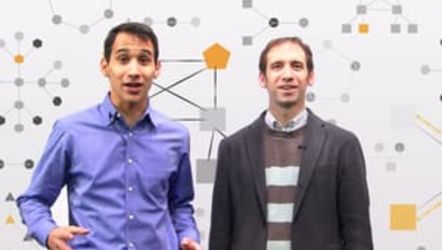
Computer Networking
Summary
This class is offered as CS6250 at Georgia Tech where it is a part of the Online Masters Degree (OMS). Taking this course here will not earn credit towards the OMS degree.
This course covers advanced topics in Computer Networking such as Software-Defined Networking (SDN), Data Center Networking and Content Distribution. The course is divided into three parts:
Part 1 is about the implementation, design principles and goals of a Computer Network and touches upon the various routing algorithms used in CN (such as link-state and distance vector).
Part 2 talks about resource control and content distribution in Networking Applications. It covers Congestion Control and Traffic Shaping.
Part 3 deals with the operations and management of computer networks encompassing SDN's (Software Defined Networks), Traffic Engineering and Network Security.
Expected Learning
Want to build on your Computer Networking knowledge or move into Network Engineering positions such as Systems Admin, Network Admin or Technical Operations (WebOps)? If so, this is the class for you.
Computer Networking takes a hands-on approach to teaching very technical material, using Mininet (a network emulator) to show you how a computer network functions, what factors contribute to its efficiency and how to overcome inherent limitations.
Syllabus
Lesson 1: Introduction
- Computer Networking Overview
- What This Class is Not About
Lesson 2: Architecture & Principles
- A Brief History of the Internet
- Architectural Design Principles
- Packet Switching
- File Transfer
- End to End Argument Violations
Lesson 3: Switching
- Switching and Bridging
- Bootstrapping: Networking Two Hosts
- ARP: Address Resolution Protocol
- Interconnecting LANs with Hubs
- Switches: Traffic Isolation
- Spanning Tree
- Switches vs. Routers
- Buffer Sizing for a TCP Sender
Lesson 4: Routing
- Internet Routing
- Intra-AS Topology
- Distance-Vector Routing
- Link State Routing
- Interdomain Routing
- IGP vs. iBGP
- BGP Route Selection
- Multiple Exit Discriminator (MEI)
- Interdomain Routing Business Models
Lesson 5: Naming, Addressing & Forwarding
- IP Addressing
- Pre-1994: "Classful" Addressing
- IP Address Allocation
- Classless Interdomain Routing (CIDR)
- Multihoming Frustrates Aggregation
- Address Lookup Using Tries
- Memory Efficiency and Fast Lookup
- Alternatives to LPM with Tries
- NAT and IPv6
- Network Address Translation (NAT)
Lesson 5.1: Router Design Basics
- Router Design
- Basic Router Architecture
- Decision: Crossbar Switching
- Switching Algorithm: Maximal Matching
- Head of Line Blocking
- Scheduling and Fairness
- Max-Min Fairness
Lesson 5.2: Domain Name System (DNS)
- Record Types
- Examples (using "dig")
- Lookup IP Address
Lesson 6: Congestion Control & Streaming
- Congestion Control
- AIMD (TCP Congestion Control)
- Data Centers & TCP "Incast"
- Barrier Synchronization & Idle Time
- Multimedia & Streaming
- Digitizing Audio & Video
- Streaming Video
- Skype
Lesson 7: Rate Limiting and Traffic Shaping
- Traffic Classification & Shaping
- Source Classification
- Leaky Bucket Traffic Shaping
- (r, t) Traffic Shaping
- Shaping Bursty Traffic Patterns
- Power Boost
- Effects on Latency
- Buffer Bloat
- Packet Monitoring
Lesson 8: Content Distribution
- The Web and Caching
- HTTP Requests
- Persistent Connections
- Content Distribution Networks (CDNs)
- Server Selection
- Content Routing
- Bit Torrent
- Solution to Freeriding: "Choking"
- Distributed Hash Tables
- Consistent Hashing
Lesson 9: Software Defined Networking
- Network Management Overview
- Software Defined Networking (SDN)
- Control and Data Planes
- Different SDN Controllers
- NOX: Overview
- Ryu, Floodlight, Nox and Pox
- Customizing Control
Lesson 10: Traffic Engineering
- Traffic Engineering Overview
- Interdomain Traffic Engineering
- Measuring, Modeling and Controlling Traffic
- Link Utilization Function
- BGP in Interdomain Traffic Engineering
- Multipath Routing
- Data Center Networking
- Valiant Load Balance
- Jellyfish Data Center Topology
Lesson 11: Network Security
- Internet is Insecure
- Resource Exhaustion
- Routing Security
- Origin and Path Authentication
- DNS Security
- DNS Cache Poisoning
Lesson 11.1: Internet Worms
- Viruses and Internet Worms
- Internet Worm Lifecyle
- First Worm: "Morris" Worm
- Worm Outbreaks in Detail
- Modeling Fast-Spreading Worms
Lesson 11.2: Spam
- Spam
- IP Blacklisting
Lesson 11.3: Denial of Service (DoS) Attacks
- TCP 3-Way Handshake
- Inferring Denial of Service Activity using Backscatter
- Automated DoS Attack Mitigation
- MTPCP
Required Knowledge
The ideal preparation for this course would be the successful completion of an undergraduate level Computer Networking course. An understanding of the TCP/IP protocol and the its layer model is recommended. Basic knowledge of python (such as through Intro to Computer Science) is required.
You should be comfortable with the implementation of basic search algorithms and a working knowledge of Linux and virtual machines is recommended.
Free
Intermediate
12 weeks
Nick Feamster
Georgia Institute of Technology
Coursearena





